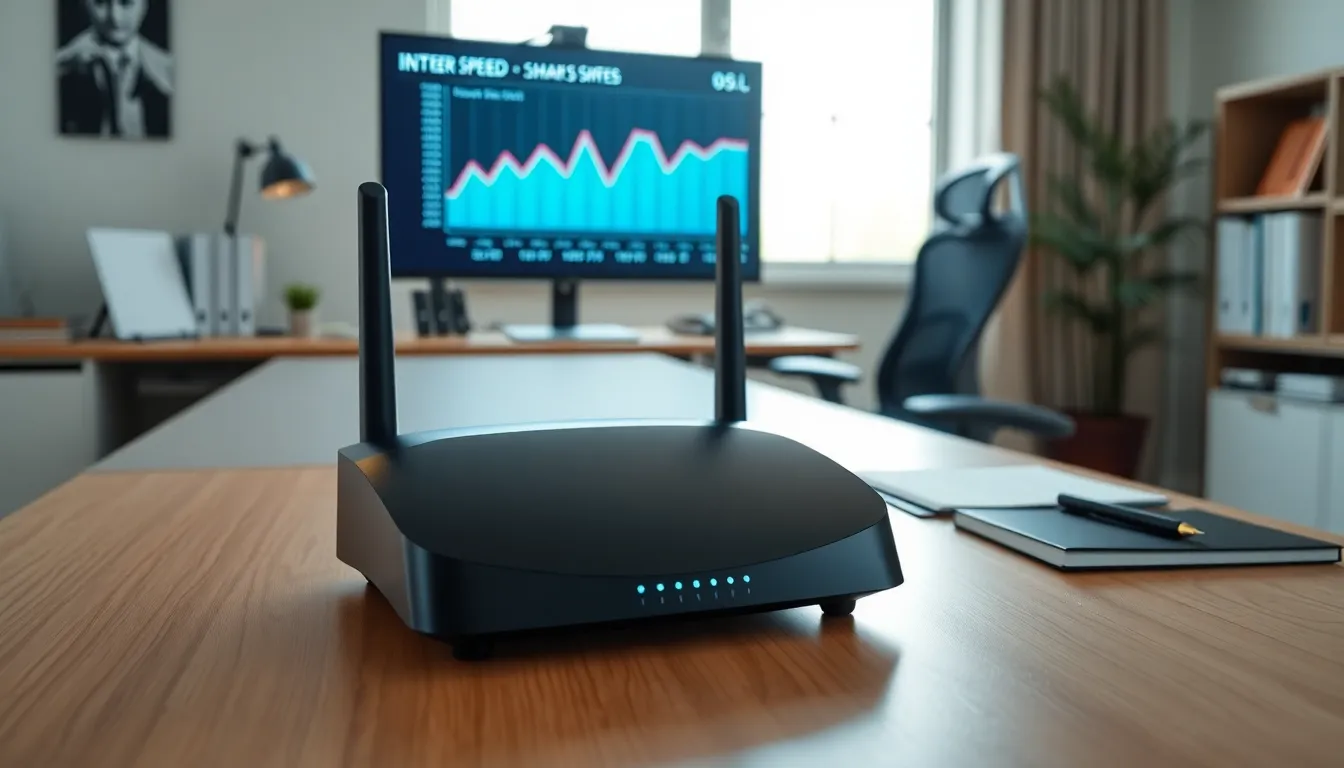In the vast ocean of internet options, DSL modems stand as unsung heroes for many homes and businesses. You might feel a bit like a techy explorer as you navigate through modem choices, but fear not. This guide is here to unravel the mysteries of DSL technology while sprinkling a bit of humor into the mix. Whether you’re looking to upgrade your current setup or just curious about what makes DSL tick, this article will give you the essential knowledge you need. So, grab your favorite snack and get comfy: let’s jump into the wonderful world of DSL modems.
DSL Modems

What Is DSL?
DSL, or Digital Subscriber Line, is a technology that delivers high-speed internet over traditional telephone lines. Unlike dial-up, which monopolizes the line and drives everyone in the household mad, DSL allows users to enjoy seamless internet and phone service simultaneously. Picture it as your friendly neighborhood multitasker, efficiently balancing both a phone call and a YouTube marathon with ease.
Types of DSL Connections
There are several types of DSL technologies, including ADSL (Asymmetric DSL), SDSL (Symmetric DSL), VDSL (Very High Bitrate DSL), and more. ADSL is the most common type for residential users, offering faster download speeds than upload speeds, perfect for binge-watching. On the flip side, SDSL provides equal speeds for both, making it great for business applications that require fast uploads and downloads. VDSL takes it a step further, revving up the speed for those who are hungry for bandwidth.
Key Features of DSL
When shopping for a DSL modem, it’s essential to understand its core features. One key aspect is the maximum speed it can handle, typically ranging from 1 Mbps to over 100 Mbps, depending on the type of DSL. Also, DSL connections are generally more stable than cable since they’re less prone to speed throttling during peak hours. With DSL, your internet browsing can be smooth sailing, rain or shine.
Choosing the Right DSL Modem
Important Specifications to Consider
Choosing the right DSL modem can feel a bit like trying to pick a favorite child: each option has its own strengths. Look for specifications such as the modem’s speed rating, which is crucial for ensuring it meets your household’s internet demands. Also, consider whether you want a modem/router combo or a standalone modem. The combo devices are convenient, but a standalone offers greater flexibility for future upgrades.
Speed and Performance
Speed is the name of the game here. The modem you choose should be compatible with the maximum speed of your DSL connection. If your internet provider offers a lightning-fast 100 Mbps, don’t settle for a modem that can only deliver 20 Mbps. It’s like having a sports car but only taking it for a leisurely drive around the block. Always check if your modem can accommodate your needs, and you’ll make the most of your internet experience.
Compatibility Considerations
Compatibility is a must when searching for the ideal DSL modem. Confirm that the modem is compatible with your ISP, as some providers have specific models they support. It’s like trying to enter an exclusive club, if you don’t have the right ID, you’re stuck outside. If you’re unsure, your ISP or a quick online search can help shed light on your options.
Setting Up Your DSL Modem
Installation Process
Setting up your DSL modem should be a straightforward process, but sometimes it can feel like putting together a complex puzzle. Begin by locating your modem and connecting it to a power source. Next, use the provided DSL cable to connect the modem to your phone line. Most modems will have clear instructions, follow these to avoid a potential mishap that could turn into a game of Twister.
Configuring Your Modem
Once physically connected, it’s time to configure the modem settings. Access the modem’s interface through a web browser by entering the IP address (usually something like 192.168.1.1). Here, you’ll enter your ISP credentials, set your Wi-Fi name (SSID), and password. It’s a great moment to channel your inner tech wizard and customize your network, making security a top priority with a strong password.
Troubleshooting Common Issues
Connectivity Problems
Even the best DSL modems can encounter hiccups, such as connectivity problems. If you find yourself staring at a spinning loading icon, first check all physical connections. Make sure the phone line is securely plugged into both the wall and the modem. Restarting the device often works wonders too, turning it off and on again can resolve many temporary glitches, like magic.
Performance Issues
If your internet feels slower than a tortoise in a marathon, you’re not alone. Performance issues can arise from various factors, including too many devices connected at once. Disconnect any devices that you’re not using and see if that helps. Also, streaming services may consume a lot of bandwidth, so it might be wise to limit those during peak usage times.
Maintaining Your DSL Modem
Regular Updates and Upgrades
Just like any gadget, your DSL modem benefits from regular updates. Manufacturers often release firmware updates that improve performance and security. Checking for updates periodically can ensure your modem runs smoothly and stays secure from any vulnerabilities. It’s like giving your trusty steed a nice oil change and tune-up every so often.
Optimizing Your Home Network
For peak performance, consider the layout of your home network. Placing your modem in a central location can enhance coverage. If you discover that certain rooms are Wi-Fi dead zones, it might be worth investing in a range extender or upgrading to a more robust modem that can cover larger areas. A well-optimized home network can make all the difference, turning your home into a streaming paradise.

